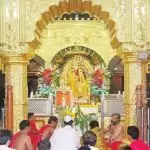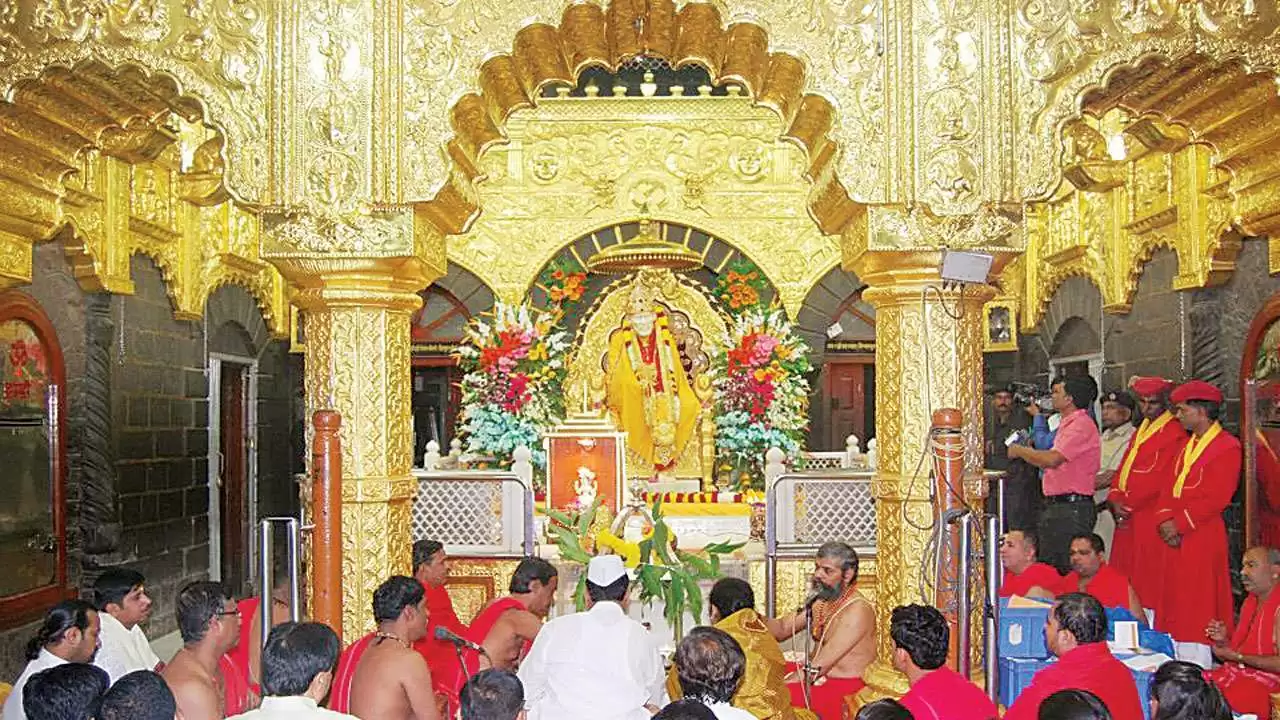
Religious places in Maharashtra reopened on Thursday after being shuttered for over six months because of the COVID-19 epidemic, with worshippers visiting different temples and mosques in Mumbai and other cities since early morning. As the reopening of holy places coincided with the commencement of the nine-day Navratri holiday, Chief Minister Uddhav Thackeray, his wife Rashmi Thackeray, and their two sons Aaditya and Tejas paid a visit to the Mumba Devi temple in Mumbai at 8:45 a.m. and offered devotion to the Goddess.
Devotees have been visiting several temples in the state capital Mumbai since early morning, following the mask and social distance rules. Since the morning, the devout have been flocking to the city’s mosques. For almost half an hour, the Chief Minister and his family were in the Mumba Devi temple grounds, all wearing masks and observing the social distance regulation. Along with the Chief Minister, Mumbai Mayor Kishori Pednekar was present. On the occasion of the Navratri festival, the Chief Minister offered greetings to residents after performing prayers.
Read also: I-T raids on steel rolling mills in Maharashtra
According to the Chief Minister, he prayed to Goddess Mumba Devi to remove the coronavirus. He added that trustees and priests of all places of worship should guarantee that worshippers maintain discipline while praying, that the shrine premises are cleaned and sanitized regularly, and that correct social distance is observed. He also complimented worship sites, such as Mumbai’s famed Siddhivinayak temple, for utilizing QR codes and other technology to allow worshippers to get online darshan.
Places of religious worship in Maharashtra were reopened in November after the first coronavirus wave faded. Still, they shuttered again for people when the second wave hit the state in March 2021. In August, the party held rallies in numerous Maharashtra cities in favor of their proposal. Last month, the Maharashtra government stated that all holy institutions in the state would reopen on October 7 with COVID-19 guidelines, a decision that comes as the second wave of the epidemic appears to be fading.
Religious sites in other regions of the state, in addition to Mumbai, reopened on Thursday. Niranjan Davkhare, a BJP MLC from Thane, visited the renowned Ghantali Devi temple and offered prayers to the Goddess. The temple was visited by several devotees, primarily ladies dressed in traditional costumes. Early in the morning, the Kopineshwar temple in Thane’s main market area and the Lord Shiva temple in Ambernath reopened their doors to worshipers. Visitors were given sanitizers, and the temple authorities observed social distance.
Musical performances organized by temple management commemorated the reopening of the Mahalaxmi temple in Dahanu and the Vajreshwari temple in Vasai in the neighboring Palghar district. The reopening of religious institutions brought joy to flower sellers and those selling other goods for prayers. “It is fortunate that the temples have reopened,” Sapna Mali, whose family made a career selling flowers outside a Ganesh temple in Thane city, said, “else it would have been impossible for us to survive in these times.” In announcing the reopening of holy institutions last month.
Read also: 43 cities from Maharashtra join ‘Race to Zero’
To guarantee the rigorous implementation of coronavirus-related measures and prevent the spread of the infection, the government established standard operating procedures (SOPs) for devotees and authorities administering places of worship. According to a government directive issued previously, these severe restrictions include not distributing ‘prasad’ (offerings), not sprinkling holy water, not touching statues, idols, or sacred texts, and staggered the number of visits to preserve social distance. It said that wearing a face mask or concealing one’s face is required when visiting holy sites and that the minimum distance between two people should be six feet.
The state administration urged senior persons, pregnant women, and children under the age of ten to stay at home. To minimize congestion, shrine administration shall offer separate access and departure points for worshippers, if practicable, according to the decree. It goes on to say that people should avoid making physical contact while welcoming one another. Last Monday, the Mumbai municipal corporation issued an order limiting the number of visitors to houses of worship to 50% of the total capacity.

